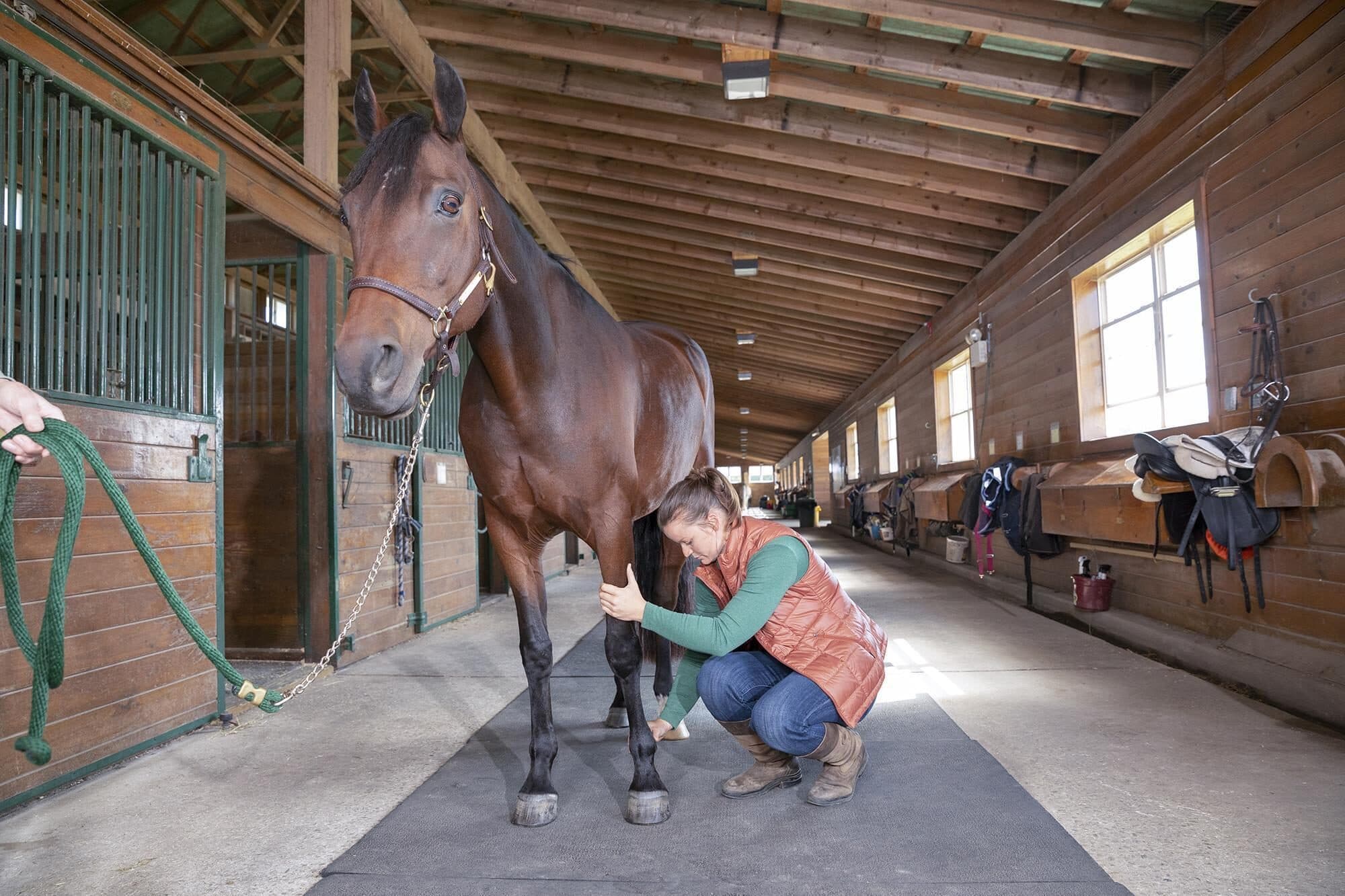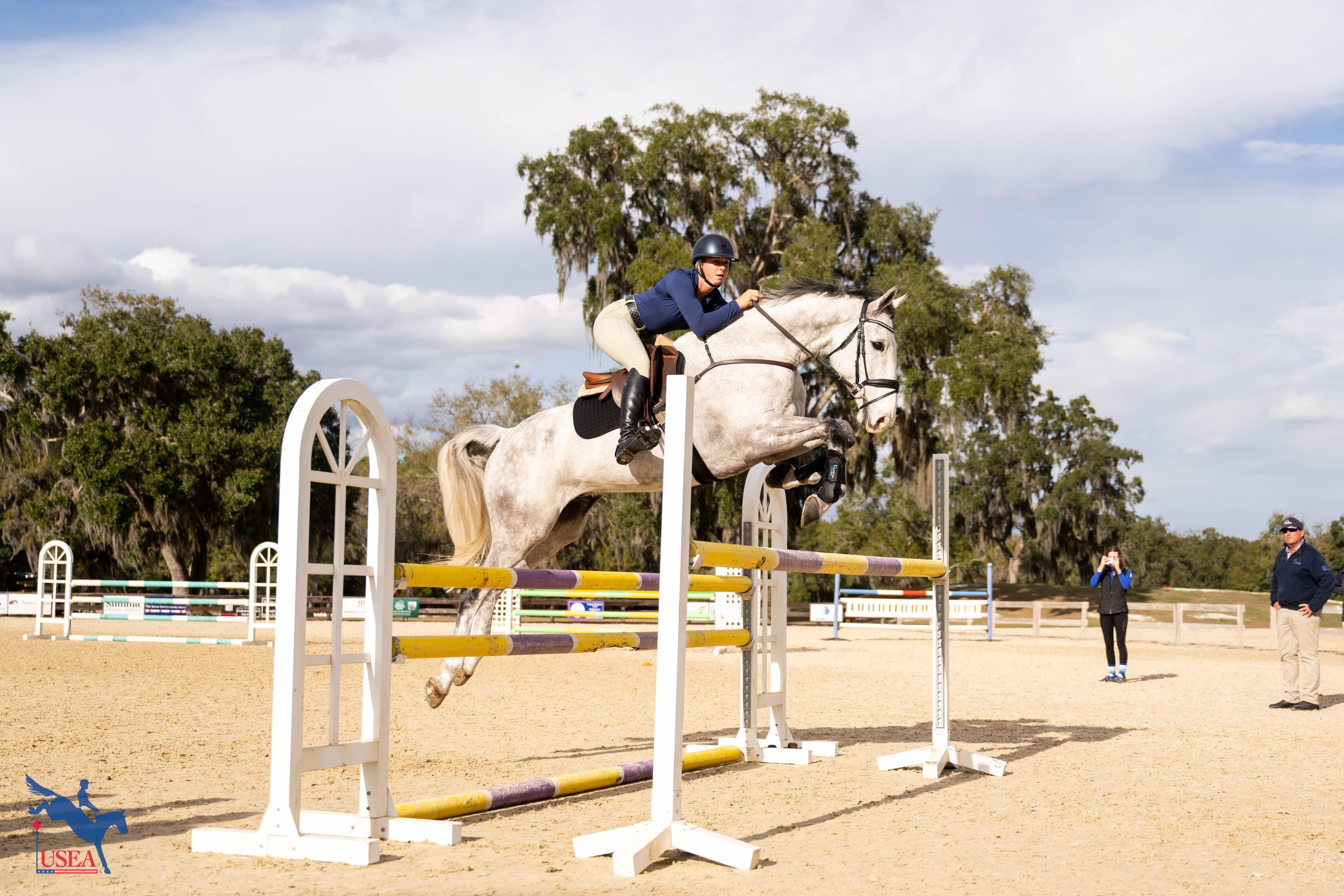Four Keys to Limiting Lameness

Mobility matters, so help keep your horse moving with healthy joints and smart healthcare.
Lameness. A dreaded word. Uttering it means that your horse may be out of commission. Determining the cause can be challenging, which means treatment—and recovery—can be a long process.
But it doesn’t have to be this way. These four keys to proactive care and communication with your veterinarian can help keep lameness from sidelining your horse and ruining your ride.
1. Commit to Regular Soundness Exams
Prevention is the best treatment. While there’s no foolproof way to stop lameness from happening, there are ways to reduce its effects. Leading veterinarians, including Kent Allen, DVM, owner of Virginia Equine Imaging and a founder of the International Society of Equine Locomotor Pathology, agree that regular soundness exams are one of the best ways to catch problems before they’ve negatively impacted your horse. “Bringing the horse in twice a year for a lameness exam is what you can do that will undoubtedly prolong this horse’s athletic life. We can detect arthritis early and come up with a rational plan,” Dr. Allen said.
During a soundness examination, your veterinarian may:
- Observe your horse walking, trotting and cantering
- Examine your horse’s back, neck and joints
- Complete a nerve block by using local anesthetic to temporarily desensitize certain areas of the limb to help identify potential issues
- Complete X-rays, possibly sharing hoof images with your farrier to help ensure ongoing proper shoeing
By establishing your horse’s “normal,” you and your veterinarian will be able to identify potential issues earlier. This is especially important because lameness may not always be obvious. In early stages, subtle changes in gait, performance or willingness to work may be the only indication.[1]
2. Keep Your Veterinarian in the Know
Because early signs of lameness can be difficult to spot, it’s smart to consider your veterinarian as your first source of lameness information. Similarly, your veterinarian relies on you for information. So be sure to share observations about how your horse is moving, says Zach Loppnow, DVM, an equine surgery resident at Steinbeck Country Equine Clinics in California. After all, he says, you know your horse better than anyone else. “Take note of when it’s not doing what you normally expect it to do. Take note of how that’s changed, what it’s doing differently—because the more time-based information you can give me on when it’s doing things and what it’s doing, the better I can diagnose what may be going on,” Dr. Loppnow said.
3. Agree to diagnostics, especially for DJD
Speaking of diagnosis, communication becomes even more important if you suspect your horse is dealing with a lameness issue. When your horse is being evaluated for lameness, your veterinarian will ask you a number of questions ranging from your horse’s routine exercise to diet and supplement use to changes in housing to other therapies your horse is receiving. Your veterinarian will also ask you to describe any past lameness your horse has experienced. All this information is critical to supporting the diagnostic procedures, which may include radiographs, nerve blocks, ultrasound and more, depending on the suspected issue.
Degenerative joint disease (DJD), also called arthritis, is often to blame for lameness. In fact, DJD causes up to 60 percent of lameness in horses.2 DJD is characterized by progressive deterioration of articular cartilage, along with changes in the bone and soft tissues of the joint.1 If left untreated, DJD continues to get worse. Diagnosing DJD allows you and your veterinarian to begin treatment early, because once cartilage wears away completely, it cannot be restored.
4. Know Product Differences
To help overcome lameness and get your horse moving again, veterinarians will recommend a treatment plan tailored to the location, severity and cause of the lameness, plus your horse’s type and level of work. When DJD is diagnosed as the cause, using therapies to both reduce the symptoms (lameness) and slow disease progression is ideal.
Successfully managing DJD may require a combination of therapies, such as FDA-approved drugs, complementary modalities and biologics. The many joint therapies vary widely in effectiveness, safety and cost, so it’s important to talk with your veterinarian about the differences. Working together to choose what’s right for your horse can make a real difference in long-term health.
These product categories are some of the most well-known (and potentially misunderstood):
Adequan® i.m. (polysulfated glycosaminoglycan). Adequan® i.m. is the only FDA-approved polysulfated glycosaminoglycan (PSGAG) for DJD. There is no generic equivalent for Adequan® i.m. It is the only product proven to: [3,4]
- Reduce inflammation
- Restore synovial joint lubrication
- Repair joint cartilage
- Reverse the disease process
Non-steroidal anti-inflammatory drugs. These FDA-approved drugs are indicated for reducing pain and inflammation associated with DJD.
Medical devices. These products, which are not approved by the FDA, are often indicated for wound management. While some include ingredients with similar names, they are not generics or substitutes for Adequan® i.m.
Supplements. Classified as a nutraceutical, these dietary supplements are indicated to support joint health. They are not approved by the FDA, nor are they considered a DJD treatment.
With this product knowledge and a few key steps, the “L” word doesn’t have to be scary. Especially when you’re paying attention to your horse’s normal (and abnormal) and building a strong bond with your equine veterinarian. These proactive measures will help you stay ahead of lameness, even if it’s caused by arthritis. After all, when mobility matters as much to you as it does your horse, the time you invest will help keep you riding together—longer.
Why is Lameness Diagnosis so Challenging?
While some breeds and horses in specific disciplines are more likely to experience lameness in certain joints, it can occur in a horse of any breed, performing any type of work at any level, and at any time in life.1 Horses can become lame from a variety of causes, and it can be as subtle as a shortening of stride length or so extreme that the horse will not put weight on the affected limb. Lameness may be isolated to one limb, involve multiple limbs or may originate from other areas of the body, such as the spine.
Therefore, diagnosis requires a veterinarian to possess a firm understanding of equine anatomy, conformation and gait analysis, as well as skill in the use of various diagnostic procedures and tools. Reaching an accurate diagnosis is critical to determining an effective treatment plan, which the veterinarian will recommend based on the location, severity and cause of the lameness, plus the type and level of the horse’s work.
INDICATIONS Adequan® i.m. (polysulfated glycosaminoglycan) is recommended for the intramuscular treatment of non-infectious degenerative and/or traumatic joint dysfunction and associated lameness of the carpal and hock joints in horses.
IMPORTANT SAFETY INFORMATION There are no known contraindications to the use of intramuscular Polysulfated Glycosaminoglycan. Studies have not been conducted to establish safety in breeding horses. WARNING: Do not use in horses intended for human consumption. Not for use in humans. Keep this and all medications out of the reach of children. CAUTION: Federal law restricts this drug to use by or on the order of a licensed veterinarian. For full prescribing information, visit adequan.com.














